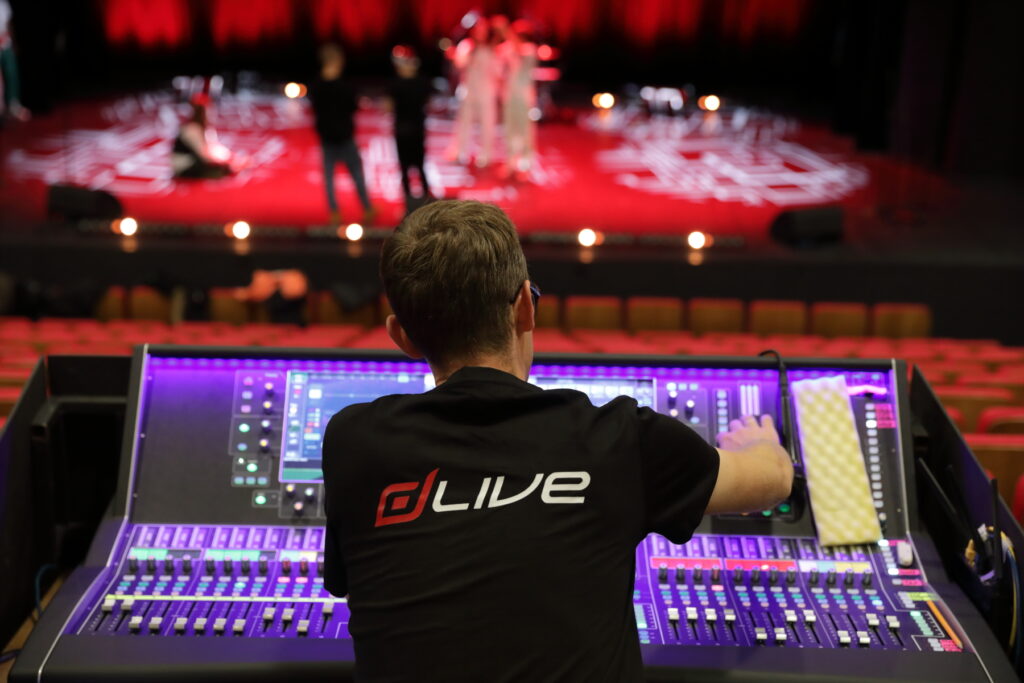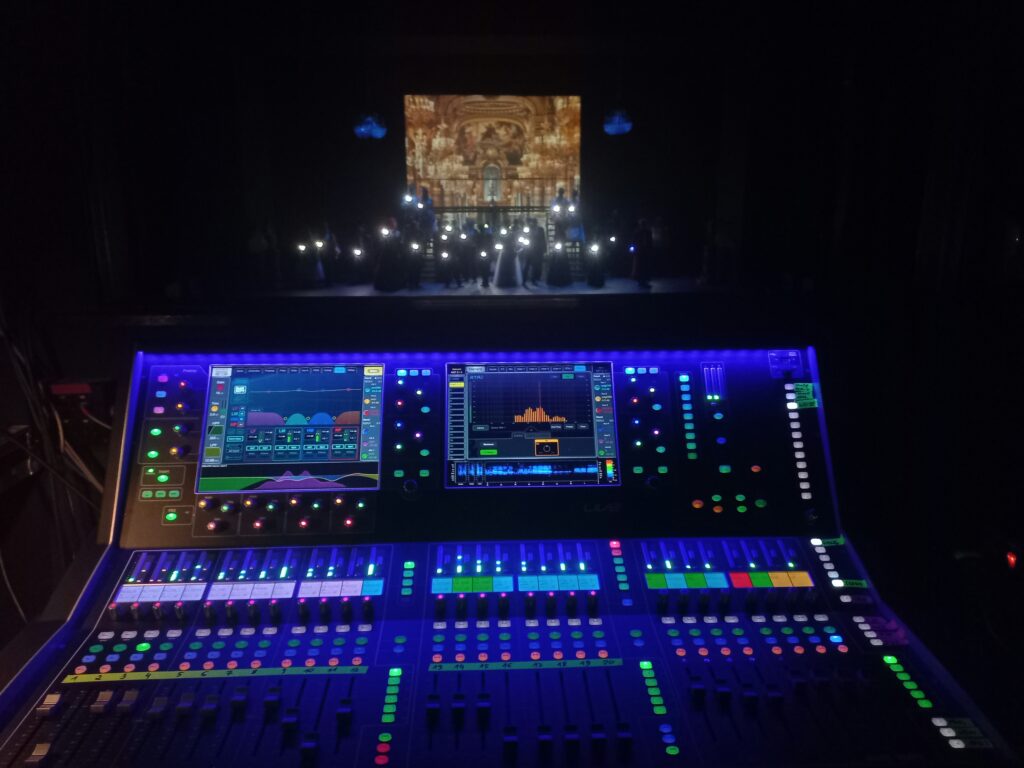Recently rebranded from the Musical Theatre in Lublin, The Lublin Opera is a cultural institution with an extensive repertoire, featuring timeless classics such as ‘La Traviata,’ ‘The Haunted Manor,’ ‘The Gypsy Baron,’ and ‘Fiddler on the Roof.’ The venue regularly presents a full range of performing arts, including musicals, opera, operettas, ballets, musical shows, concerts, and educational performances.
In a strategic move to enhance their sound console system, The Lublin Opera entrusted Konsbud Audio to deliver a state-of-the-art setup, including Allen & Heath dLive S7000 and S5000 Surfaces, dLive DM64 and DM0 MixRacks, plus a SQ-5 mixer. In addition, six DX168 remote expanders, each providing 16 inputs and 8 outputs on XLR, and a pair of IP remote controllers, were deployed at the venue.
Łukasz Jakubowski, Sound Engineer at The Lublin Opera, commented “We decided to modernise the audio system due to the ageing equipment and the need for increased flexibility. Our primary concern was ease of use for large stage productions that require immediate access to many audio channels and their parameters. The second but no less crucial factor was to provide a redundant system in case of cable failures, localised power issues, or other unforeseen emergencies. As such, the idea was to equip the Opera with two independent systems with identical signal processing properties – fully compatible in terms of recording and recalling show parameters.”
All dLive MixRacks offer 128 input channels and 64 mix outputs with a configurable 64-bus architecture, class-leading 0.7ms latency and phase-aligned signal paths for maximum flexibility in all applications. The DM64 is the largest MixRack in the range, with 64 mic/line inputs, 32 line outputs and 3 I/O ports for audio networking. Conversely, the DM0 is the smallest MixRack in the range, with no analogue I/O and 3 audio networking I/O ports. The analogue I/O capabilities of any dLive system can be augmented using remote audio expanders from the Everything I/O range.
Additionally, the audio system includes IP8 and IP1 controllers alongside a tablet and laptop with control applications, and gigaACE and Dante cards for audio networking. Jakubowski praised the system’s user-friendly interface and its ability to seamlessly handle diverse signal sources.
“As dLive is a modular system, it gives us increased connection flexibility and enables us to configure it more conveniently depending on the requirements of a given production,” explains Jakubowski. “With the new setup, we can create front-of-house and monitor stations, or two independent FOH stations, or even connect two MixRacks to multiply the number of available channels. Typically, the DM64 in combination with the S7000 Surface fulfils the task of the main system in the Auditorium, with the control of the monitor mix via iPad. Analogue inputs are supported by the six DX168 expanders which are located where needed.”
dLive MixRacks can be controlled in multiple ways, with Surfaces being the most popular. The S7000 Surface features two 12” touchscreens and 36 faders, while the S5000 Surface offers 28 faders and the same dual touchscreens as its larger brother. MixRacks can also be controlled via dLive Director, a multi-platform editor and control software for dLive, enabling engineers to configure the system offline before the show, check and edit Show files from guest engineers, and control the mix live using a laptop or compatible tablet. Additionally, control can be handled via the IP range of remote controllers and the MixPad and Custom Control apps.
The Lublin Opera has successfully staged numerous productions with the new system, including ‘Tosca’ by G. Puccini and ‘Die Fledermaus’ by J. Strauss. Jakubowski highlighted the system’s contribution to the faithful reproduction of the operas.
“Our first production using the new system was the opera ‘Tosca’,” says Jakubowski. “The location of widely dispersed signal sources – from the orchestra pit to the supporting microphones suspended high above the stage – was not a major problem. We used the DX168 expanders to avoid making multi-pair analogue connections over long distances. And thanks to dLive’s phase-coherent mix technology, my colleague on monitors and myself at FOH didn’t have to worry about phase issues due to different processing on the channels or the location of A/D converters.”
Despite an initial learning curve, Jakubowski praised the dLive system’s advancements, including increased channel count, FX processors, and dynamic processors. The system’s adaptability, combined with its excellent price-to-feature ratio, positions Allen & Heath as the ideal choice for cultural institutions like The Lublin Opera.
“My favourite features include the freedom to arrange channels on the control surface layers and EQ support via the touch screen, although I personally prefer encoders – but there are plenty of these and programmable SoftKeys on the console,” Jakubowski notes. “The move to a 96kHz FPGA-based system has been a positive experience and we really enjoy its power and sound fidelity. Furthermore, the onboard processing, including Dyn8 and RTA are exceedingly useful.”
The Lublin Opera continues to captivate audiences with its seamless blend of tradition and modernity, now amplified by the modern audio solutions provided by Allen & Heath and Konsbud Audio.

